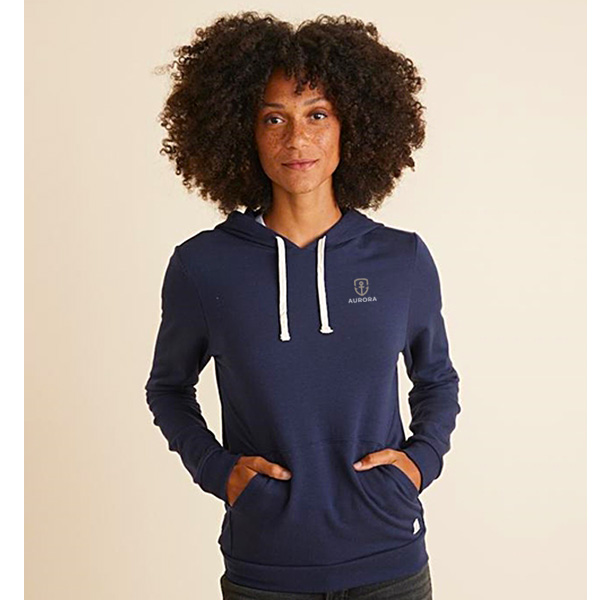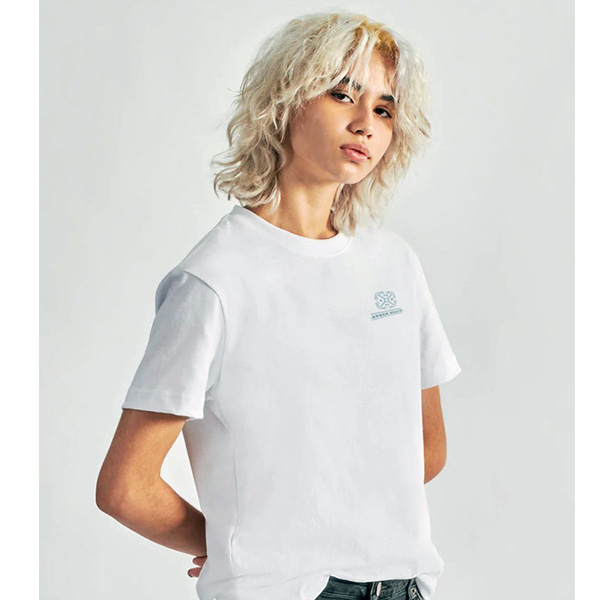November 01, 2022
The End of Blends? Not Necessarily, Apparel Suppliers Say
New recycling regulations in Europe may give a boost to monofiber manufacturing, but with the enduring popularity of soft fabrics and athleisure, polyblends and tri-blends are unlikely to disappear anytime soon.
Earlier this year, The European Commission published a plan that aims to put “fast fashion out of fashion” by 2030, noting that clothing should be “long-lived and recyclable, to a great extent made of recycled fibers.” Full details of how this will be achieved are not yet decided; however, a proposed piece of the solution is to require companies to focus on garments made from single fibers – aka monofibers – making it possible to recycle the entire product or upcycle it into a new garment.
How do these regulations affect the fastest-growing category in fashion – athleisure – which relies on blended fabrics to create garments that are synonymous with stretch, softness and wearability? Will apparel suppliers in the promo industry pivot to 100% cotton after years of singing the praises of polyblends and triblends?
Asking the Right Questions
This pullover hoodie (WLHP3) from Marine Layer is made of a blend of supima cotton, spandex and micromodal. Modal is made of recycled beechwood. The soft hand feel of the blend would be difficult to replicate with a monofiber, industry experts say.
Industry leaders believe an increase in single-fiber clothing is part of the solution, but given the complexity of textile waste issues – plus customer demand for the ultra-soft garments made possible by blends – they’re not convinced that monofiber manufacturing is a panacea, by any means. Rather, apparel manufacturers are taking a wider view of the problem and asking different questions.
“This discussion is multifaceted, and we must talk about the overall impact on the earth. How long can a garment be used and what happens at the end of its life?” says Andrew Graham, senior director of wholesale and custom products for Marine Layer (asi/68730). “For example, making a quality blend that’s much harder to recycle but will be worn for 10 years and then handed down to another wearer, versus a lower-quality single-fiber product – or a product made from all recycled fabrics – that’s worn for two years then tossed back into the system that requires more after-life labor. Which is the better choice?”
Kriya Stevens, director at econscious (asi/51656), echoes Graham’s approach, and takes it a step further: “It’s no longer enough to look at one piece of the climate puzzle,” says Stevens. “We’re seeking to find circular, holistic solutions that consider the entire lifecycle of a garment – to put the resources from that garment to work in the form of another product or create a product that can be returned to the earth, with the goal of throwing less materials into landfills and reducing the myriad impacts associated with the use of virgin materials.”
For a while now, supplier companies have been working to introduce both single-fiber products and products made from 100% recycled fibers into their lines. “It’s been an ongoing challenge – our first launch of a fully recycled product didn’t sell as well as we had hoped,” Graham says. “It was noticeably not as soft, didn’t wear as well, and started to pill after a few washes. Therefore, it didn’t have as long of a life, and we still had to charge more for it because of the processes to make that product possible.”
This unisex tri-blend tee (AL2004) from Allmade is a blend of 50% Repreve polyester made from recycled plastic, 25% organic cotton and 25% Tencel modal. The blend results in a smooth, flexible fabric that holds decoration well, according to the supplier.
Allmade (asi/34341) has had similar experiences with recycled fabrics. “We were making a shirt from recycled single fiber from the cuttingroom floor, but even with that clean fiber source, we weren’t able to create the quality we wanted. It was really rough,” says Ryan Moor, founder of Allmade. “Customers value softness, and we could make it softer by blending the recycled fiber back into a yarn that has other fibers in it like modal or poly – which we are experimenting with. But then it can’t be recycled again, so there’s not a long shelf life, and it becomes a once-recycled product.”
The Reality of Recycling
Everywhere Apparel offers wearables like this T-shirt (EV4001) made of 100% recycled cotton.
Though chemical-recycling programs are being beta tested, the standard as of now is mechanical recycling, an intensely laborious process to manually separate fibers from blended garments – polyester from cotton from spandex – after the garments are free of decorations, prints and buttons. From this lens alone, single-fiber garments do pose a resolution to the recycling bottleneck and keep synthetic fibers out of landfills.
“More often than not, clothing with blended synthetic-organic fiber content is downcycled rather than truly recycled – to carpet and mattress padding, stuffed animals or insulation, to give a few examples,” says Irys Kornbluth, chief operating officer for Everywhere Apparel (asi/53059). “A regulatory push toward single-fiber clothing would accelerate recycling rates in apparel today and empower mechanical recyclers globally.”
“I don’t think any one trend will win here. It has to be a collective effort across the industry to do better by the planet and its people, to retrain the customer to not buy as often, and for companies to drop the obsession with fast fashion.”Andrew Graham, Marine Layer
Downcycling and recycling partnerships are key elements to ensuring that garment materials are reused in different ways, especially if that garment is a blend. “Until we get to a point where chemical recycling is accessible, we need to be looking at how to weave single-fiber options in with blends, or perhaps looking for other sources of polyester that are biodegradable,” says Moor. “We have to get creative. Unfortunately, the technology isn’t quite there to make the leaps with synthetic recycling that are drastically needed right now.”
Marine Layer’s Respun program allows people to send in old T-shirts for a credit with the company that can be used toward a future purchase. To date, the Respun program has kept 500,000 T-shirts out of landfills, with approximately 20% of fabric usable for new yarn. The promotional side of the program offers distributors a way to help customers recycle their old apparel when undergoing a rebrand or clearing out company-store inventory. “We accept shirts of all kinds, but we are always happy to receive single-fiber garments in this program, with an emphasis on 100% cotton,” Graham says.
Monofibers for Basics
View this post on Instagram
Monofiber garments can hold shape well, and when made with high-quality yarns, can be a staple product that lasts in a wearer’s closet for decades – checking off the boxes of “long shelf life” and ability to turn into another garment or go back to the earth when the time comes. “Many of my most treasured pieces of apparel are single-fiber,” says Stevens of econscious, noting that eight out of the top 10 best-selling products in the econscious line are 100% organic cotton. “Everything from that old concert tee to the same econscious hoodie I’ve had for 10 years – it still looks amazing.”
Everywhere Apparel offers a “closed loop collection,” featuring basics made from 100% post-industrial recycled cotton that was otherwise destined for the landfill. “We are confident that basic garments can be made using single-fiber contents that are just as high-quality and comfortable as blended garments,” says Kornbluth. “Eliminating elastane materials is going to be a bigger challenge, though, especially for performance apparel, as there is a limit to the recovery of materials using mechanical stretch alone. T-shirts can and should be made out of single-fibers to drastically increase recycling rates.”
Working on options for single-fiber garments and replacing synthetic fibers with natural or recycled fibers are moves in the right direction, according to Graham. He adds that Marine Layer is selling down its existing inventory and remaking its best sellers in a recycled poly-spandex blend. “I don’t think any one trend will win here. It has to be a collective effort across the industry to do better by the planet and its people, to retrain the customer to not buy as often, and for companies to drop the obsession with fast fashion,” he says.

Promo for the Planet is your destination for the latest news, biggest trends and best ideas to help build a more sustainable and socially-responsible industry.


